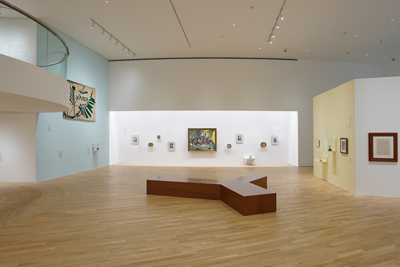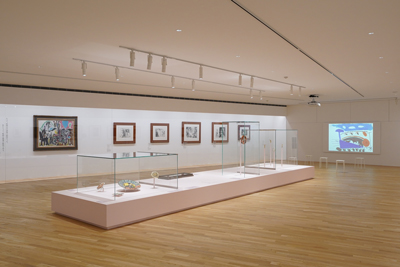
Since originally opening in 1984, the Picasso Pavilion has rotated display of some of the 319 works in the museum’s Picasso Collection. We are pleased to announce that we have changed the pavilion exhibit for the first time since its renovation in July 2019. This latest exhibit deconstructs the artist himself, presenting perspectives from different angles, such as subject matter and technique, and different points in time, by date of the artwork, so that the viewer may then reconstruct their image of Picasso. For this exhibit, works from the Picasso Collection have been divided into 17 themes, creating a free and natural exhibition space unbound by chronology. The Picasso of this exhibit is one who defies definition by a single perspective or specific point in time—Picasso as a continuum transcending time and space. We hope you enjoy a unique experience of this unconventional presentation of Picasso's works.
Saturday, May 28, 2022 - Monday, May 26, 2025
No. of works on display: 116* Two-dimensional art other than large paintings and prints, tapestries, and photographs not in previous exhibit now on display
Exhibition Layout
The exhibit is organized into 17 different themes and includes 116 works on display.
Each theme presents artwork of various techniques and dates.
28 works
Display of large-scale two-dimensional art and tapestries
Themes
- Cubism
- Seascape
- Table with Fish
- Three Graces
- Pose with Raised Arms
- Triangular Faces
- Blue Period

54 works
Display of ceramics
Themes
- Animals
- Birds
- Bullfighting Scene
- Fauns
- Still Life
- Human Figures
- Happy Faces

34 works
Display of small- and medium-sized two-dimensional art and small three-dimensional artworks; screening of The Mystery of Picasso
Themes
- Jacqueline and Profiles
- The Artist and His Model
- Bacchanalia

Highlights
This is the first exhibit change since the Picasso Pavilion renovation in July 2019.
49 of the 116 works in this exhibit are newly on display.
The newly displayed works mainly comprise two-dimensional art other than large paintings and prints, tapestries, and photographs.
Picasso ceramics from the previous exhibit are still on display in a manner integrated into the current exhibit theme.
Points of Interest
Woodblock print on reverse of Two Heads of Women (1906, gouache on paper)
Recent research has revealed that Picasso's Two Heads of Women is drawn on what appears to be the back of a reproduction of a woodblock print by German Renaissance artist Albrecht Dürer, The Martyrdom of St. Catherine (c. 1498). During this period, Picasso did not have the money to buy canvasses, so he worked exclusively on sketches. Picasso was said to have preferred good quality paper.

The Mystery of Picasso
This documentary film focuses on capturing the creation of Picasso’s works, and viewers can see the actual scene where Picasso's Composition Summer 1955, on display in this exhibit in Gallery 1, was drawn.
We see flashes of Picasso's mind as he runs his ink pen in all directions, connecting dots with lines, with no initial sketch.

* Directed by Henri-Georges Clouzot (1956) / 1 hour 18 minutes
* A DVD/Blu-ray of the movie is available at the museum shop